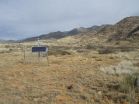(Press-News.org) TEMPE, Ariz. – Earthquakes are among the most destructive and common of geologic phenomena. Several million earthquakes are estimated to occur worldwide each year (the vast majority are too small to feel, but their motions can be measured by arrays of seismometers). Historically, most of Arizona has experienced low levels of recorded seismicity, with infrequent moderate and large earthquakes in the state. Comprehensive analyses of seismicity within Arizona have not been previously possible due to a lack of seismic stations in most regions, contributing to the perception that widespread earthquakes in Arizona are rare. Debunking that myth, a new study published by Arizona State University researchers found nearly 1,000 earthquakes rattling the state over a three-year period.
Jeffrey Lockridge, a graduate student in ASU's School of Earth and Space Exploration and the project's lead researcher, used new seismic data collected as part of the EarthScope project to develop methods to detect and locate small-magnitude earthquakes across the entire state of Arizona. EarthScope's USArray Transportable Array was deployed within Arizona from April 2006 to March 2009 and provided the first opportunity to examine seismicity on a statewide scale. Its increased sensitivity allowed Lockridge to find almost 1,000 earthquakes during the three-year period, including many in regions of Arizona that were previously thought to be seismically inactive.
"It is significant that we found events in areas where none had been detected before, but not necessarily surprising given the fact that many parts of the state had never been sampled by seismometers prior to the deployment of the EarthScope USArray," says Lockridge. "I expected to find some earthquakes outside of north-central Arizona, where the most and largest events had previously been recorded, just not quite so many in other areas of the state."
One-thousand earthquakes over three years may sound alarmingly high, but the large number of earthquakes detected in the study is a direct result of the improved volume and quality of seismic data provided by EarthScope. Ninety-one percent of the earthquakes Lockridge detected in Arizona were "microquakes" with a magnitude of 2.0 or smaller, which are not usually felt by humans. Detecting small-magnitude earthquakes is not only important because some regions experiencing small earthquakes may produce larger earthquakes, but also because geologists use small magnitude earthquakes to map otherwise hidden faults beneath the surface.
Historically, the largest earthquakes and the majority of seismicity recorded within Arizona have been located in an area of north–central Arizona. More recently, a pair of magnitude 4.9 and 5.3 earthquakes occurred in the Cataract Creek area outside of Flagstaff. Earthquakes of magnitude 4.0 or larger also have occurred in other areas of the state, including a magnitude 4.2 earthquake in December 2003 in eastern Arizona and a magnitude 4.9 earthquake near Chino Valley in 1976.
"The wealth of data provided by the EarthScope project is an unprecedented opportunity to detect and locate small-magnitude earthquakes in regions where seismic monitoring (i.e. seismic stations) has historically been sparse," explains Lockridge. "Our study is the first to use EarthScope data to build a regional catalog that detects all earthquakes magnitude 1.2 or larger."
His results appear in a paper titled, "Seismicity within Arizona during the Deployment of the EarthScope USArray Transportable Array," published in the August 2012 issue of the Bulletin of the Seismological Society of America. Ramon Arrowsmith and Matt Fouch, professors in ASU's School of Earth and Space Exploration, are Lockridge's dissertation advisors and coauthors on the paper. Fouch is also a geophysicist at the Carnegie Institution's Department of Terrestrial Magnetism in Washington, DC.
"The most surprising result was the degree to which the EarthScope data were able to improve upon existing catalogs generated by regional and national networks. From April 2007 through November 2008, other networks detected only 80 earthquakes within the state, yet over that same time we found 884 earthquakes, or 11 times as many, which is really quite staggering," says Lockridge. "It's one of countless examples of how powerful the EarthScope project is and how much it is improving our ability to study Earth."
Lockridge is also lead author on a study that focuses on a cluster of earthquakes located east of Phoenix, near Theodore Roosevelt Lake. The results from this study will be published in Seismological Research Letters later this year. In his current studies as doctoral student, Lockridge is using the same methods used for Arizona to develop a comprehensive earthquake catalog for the Great Basin region in Nevada and western Utah.
INFORMATION:
Nearly 1,000 earthquakes recorded in Arizona over 3 years
2012-08-14
ELSE PRESS RELEASES FROM THIS DATE:
Launching a 'social networking war' against cancer
2012-08-14
Experts agree that, more than ever before, modern wars will be fought in the cyber zone, targeting an enemy's communications technology to cause untold damage. Now a Tel Aviv University researcher is suggesting that the same tactics should be employed in the battle against one of the body's deadliest enemies — cancer.
In an article published in Trends in Microbiology, Prof. Eshel Ben-Jacob of TAU's School of Physics and Astronomy and Prof. Herbert Levine of Rice University, long-time bacteria researchers, and Prof. Donald Coffey of Johns Hopkins University, a renowned ...
Studies seek better understanding and treatment of depression
2012-08-14
AUGUSTA, Ga. – Connecting the dots between two molecules whose levels are decreased in depression and increased by current antidepressants could yield new therapies, researchers say.
Serotonin is a neurotransmitter that enables brain cells to communicate and brain-derived neurotropic factor, or BDNF, is a brain-nourishing molecule that also aids connectivity. Popular antidepressants such as Prozac, developed to increase levels of serotonin, have recently been found to also increase BDNF levels, said Dr. Anilkumar Pillai, neuroscientist at the Medical College of Georgia ...
Can specialized HIV community pharmacies improve treatment?
2012-08-14
New Rochelle, NY, August 14, 2012—Community pharmacies with specially trained staff to provide HIV services can help HIV-infected individuals be more compliant with their essential antiviral drug regimens and hence improve patient outcomes. Users of HIV-specialized Walgreen pharmacies across the U.S. had significantly greater adherence to and persistence with their therapeutic drug regimens according to a study published in AIDS Patient Care and STDs, a peer-reviewed journal from Mary Ann Liebert, Inc., publishers. The article is available free on the AIDS Patient Care ...
Closing in on the border between primordial plasma and ordinary matter
2012-08-14
UPTON, NY - Scientists taking advantage of the versatility and new capabilities of the Relativistic Heavy Ion Collider (RHIC), an atom smasher at the U.S. Department of Energy's Brookhaven National Laboratory, have observed first glimpses of a possible boundary separating ordinary nuclear matter, composed of protons and neutrons, from the seething soup of their constituent quarks and gluons that permeated the early universe some 14 billion years ago. Though RHIC physicists have been creating and studying this primordial quark-gluon plasma (QGP) for some time, the latest ...
Impulsive micromanagers help plants to adapt, survive
2012-08-14
EAST LANSING, Mich. — Soil microbes are impulsive. So much so that they help plants face the challenges of a rapidly changing climate.
Jen Lau and Jay Lennon, Michigan State University biologists studied how plants and microbes work together to help plants survive the effects of global changes, such as increased atmospheric CO2 concentrations, warmer temperatures and altered precipitation patterns. The results, appearing in the current issue of the Proceedings of the National Academy of Sciences, showed that microbes in the ground not only interact with plants, but they ...
Scientists devise new strategy to destroy multiple myeloma
2012-08-14
Researchers at Virginia Commonwealth University Massey Cancer Center are reporting promising results from laboratory and animal experiments involving a new combination therapy for multiple myeloma, the second most common form of blood cancer.
The study published online in the journal Cancer Research details a dramatic increase in multiple myeloma cell death caused by a combination of the drugs obatoclax and flavopiridol. The researchers, led by Steven Grant, M.D., Shirley Carter Olsson and Sture Gordon Olsson Chair in Oncology Research, associate director for translational ...
Success of engineered tissue depends on where it's grown
2012-08-14
CAMBRIDGE, Mass. -- Tissue implants made of cells grown on a sponge-like scaffold have been shown in clinical trials to help heal arteries scarred by atherosclerosis and other vascular diseases. However, it has been unclear why some implants work better than others.
MIT researchers led by Elazer Edelman, the Thomas D. and Virginia W. Cabot Professor of Health Sciences and Technology, have now shown that implanted cells' therapeutic properties depend on their shape, which is determined by the type of scaffold on which they are grown. The work could allow scientists to ...
Hearing the telltale sounds of dangerous chemicals
2012-08-14
WASHINGTON, Aug. 14, 2012-- To warn of chemical attacks and help save lives, it's vital to quickly determine if even trace levels of potentially deadly chemicals—such as the nerve gas sarin and other odorless, colorless agents—are present. U.S. Army researchers have developed a new chemical sensor that can simultaneously identify a potentially limitless numbers of agents, in real time. A paper describing the system has been published today in the Optical Society's (OSA) journal, Optics Letters.
The new system is based on a phenomenon known as the photoacoustic effect, ...
New process doubles production of alternative fuel while slashing costs
2012-08-14
URBANA – A new discovery should make the alternative fuel butanol more attractive to the biofuel industry. University of Illinois scientist Hao Feng has found a way around the bottleneck that has frustrated producers in the past and could significantly reduce the cost of the energy involved in making it as well.
"The first challenge in butanol production is that at a certain concentration the fuel being created becomes toxic to the organism used to make it (Clostridium pasteurianum and other strains), and that toxicity limits the amount of fuel that can be made in one ...
Team discovers reason that male moths can keep finding females
2012-08-14
BOZEMAN, Mont. – A female moth sitting on a goal post could attract a male moth on the other end of a football field. And even if she switched her scent over time, the male could still find her because of a mutation to a single gene in his antenna.
A team of researchers led by Montana State University entomologist Kevin Wanner identified that gene after seeing how it adapted to even the slightest change in the chemicals female moths emit to attract males. The scientists explained their findings in the Aug. 13 online edition of the Proceedings of the National Academy of ...




